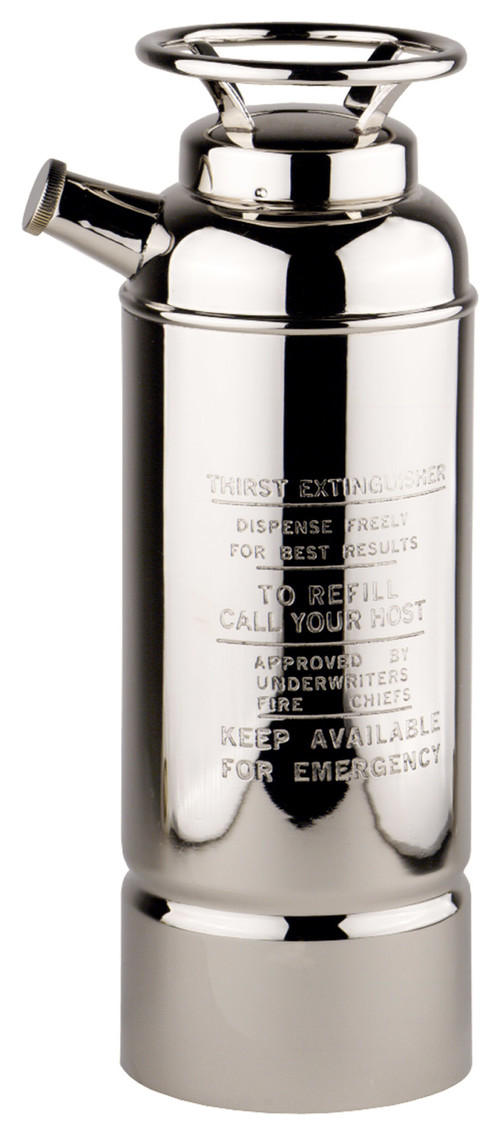Selecting the proper fire extinguisher for your home can be a daunting task. Everyone should have at least one fire extinguisher at home, but it’s just as important to ensure you have the proper type of fire extinguisher. Fire extinguishers are divided into four categories, based on different types of fires and fire protection experts recommend one for the kitchen, the garage and workshop.

Find bar tool sets and shakers for your home
However, fire extinguishers are useful for putting out small fires. To be used properly, fire extinguishers must be readily available and users must be familiar with their operation. So, before using your fire extinguisher, be sure to read the instructions before it’s too late.
Choosing a fire extinguisher is based on the types of fires the extinguisher will be expected to put out. Fire extinguishers are rated for certain types of fires.
- Class A extinguishers are for ordinary combustible materials such as paper, wood, cardboard, and most plastics.
- Class B fires involve flammable or combustible liquids such as gasoline, kerosene, grease and oil.
- Class C fires involve electrical equipment, such as appliances, wiring, circuit breakers and outlets.
Warning: Never use water to extinguish class C fires – the risk of electrical shock is far too great! - Class D fire extinguishers are commonly found in a chemical laboratory. They are for fires that involve combustible metals, such as magnesium, titanium, potassium and sodium.
- Class K fire extinguishers are for fires that involve cooking oils, trans-fats, or fats in cooking appliances and are typically found in restaurant and cafeteria kitchens.
Fire Extinguisher Techniques
Regardless which class or type of fire extinguisher is used, the basic techniques are the same. In fact, it’s easy to remember how to use a fire extinguisher if you can remember the acronym PASS, which stands for Pull, Aim, Squeeze, and Sweep.
WARNINGS:
1. Only fight a fire that is small and contained.
2. Do not fight a fire between you and the exit.
3. Make sure the building is being evacuated and someone is calling emergency services.
4. Don’t attempt to fight a fire that you don’t feel safe attacking.
Steps:
First of all you should locate a fire extinguisher labeled for the fire you intend to attack. Most fires start small. Except for explosions, fires can usually be brought under control if they are attacked correctly with the right type and size of extinguisher within the first two minutes.
1. Pull the pin on the fire extinguisher. Some extinguishers require releasing a lock latch, pressing a puncture lever or other motion.
2. Aim low the nozzle (or its horn or hose) at the base of the fire.
3. Squeeze the handle to discharge the extinguisher.
4. Sweep from side to side at the base of the fire until it appears to be out. Watch the fire area in case fire breaks out again, and repeat use of extinguisher if necessary.
NOTE: A typical fire extinguisher contains 10 seconds of extinguishing power. This could be less if it has already been partially discharged. Always read the instructions that come with the fire extinguisher beforehand and become familiarized with its parts. However, once the fire is out, don’t walk away. Watch the area for a few minutes in case it re-ignites.
- Recharge the extinguisher immediately after use.
- Co2 extinguishers displace oxygen so be careful in confined spaces.
- A Co2 extinguisher will get very cold very quick; so, make sure you have adequate hand protection, so as to prevent frost burn.
Several Smart Ideas for Your Home – Inspiring Tips (howtobuildahouseblog.com)

